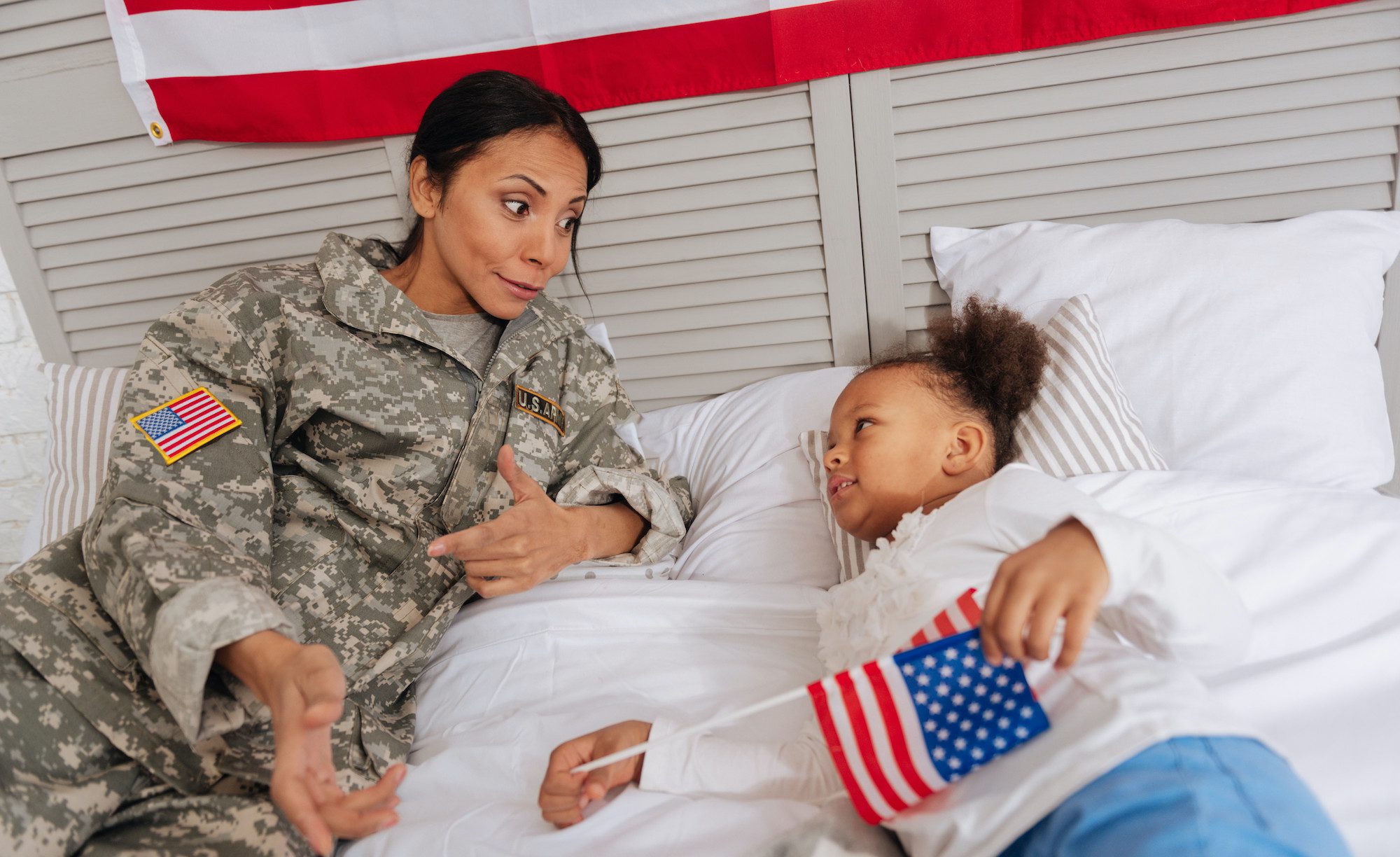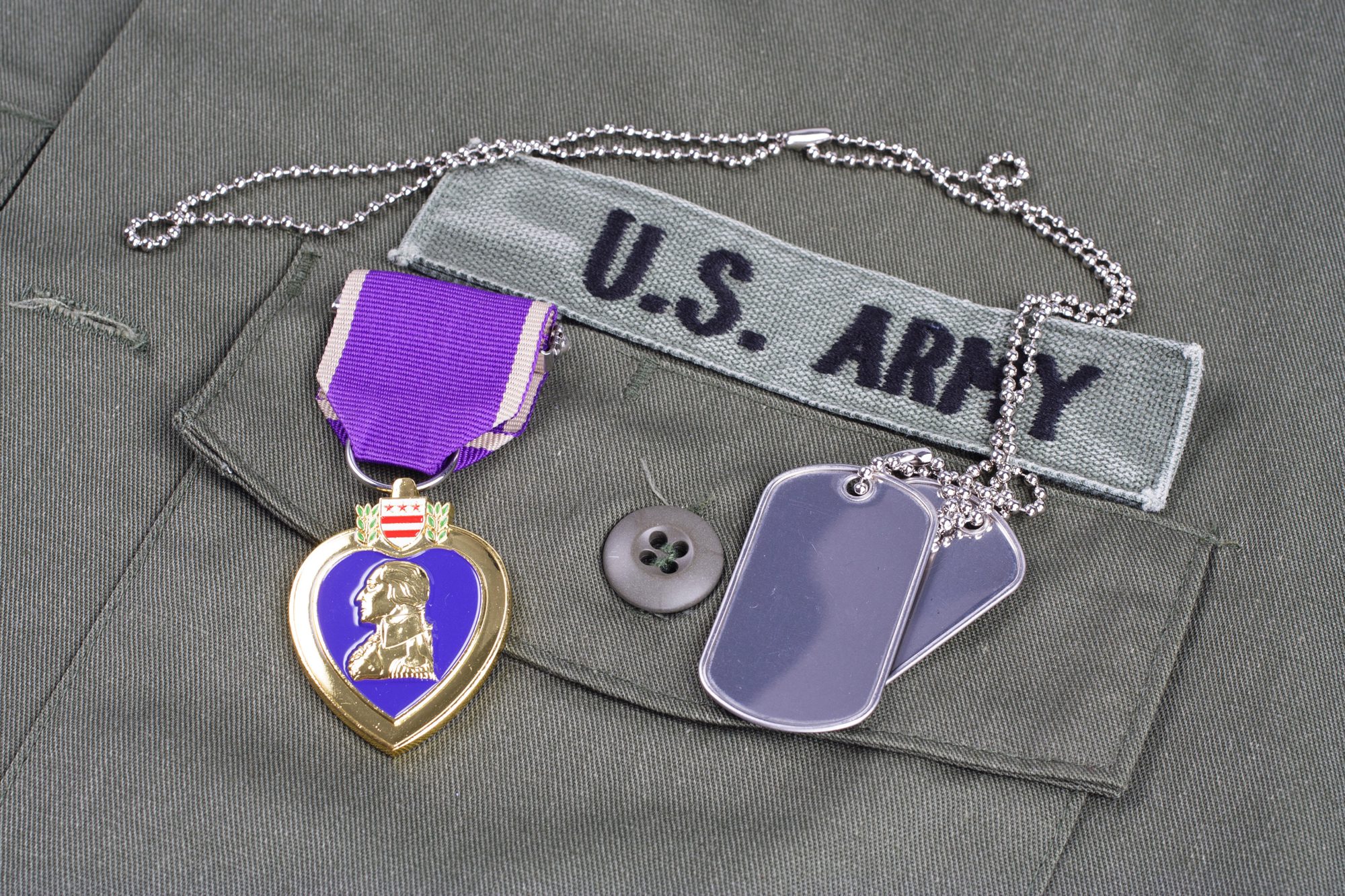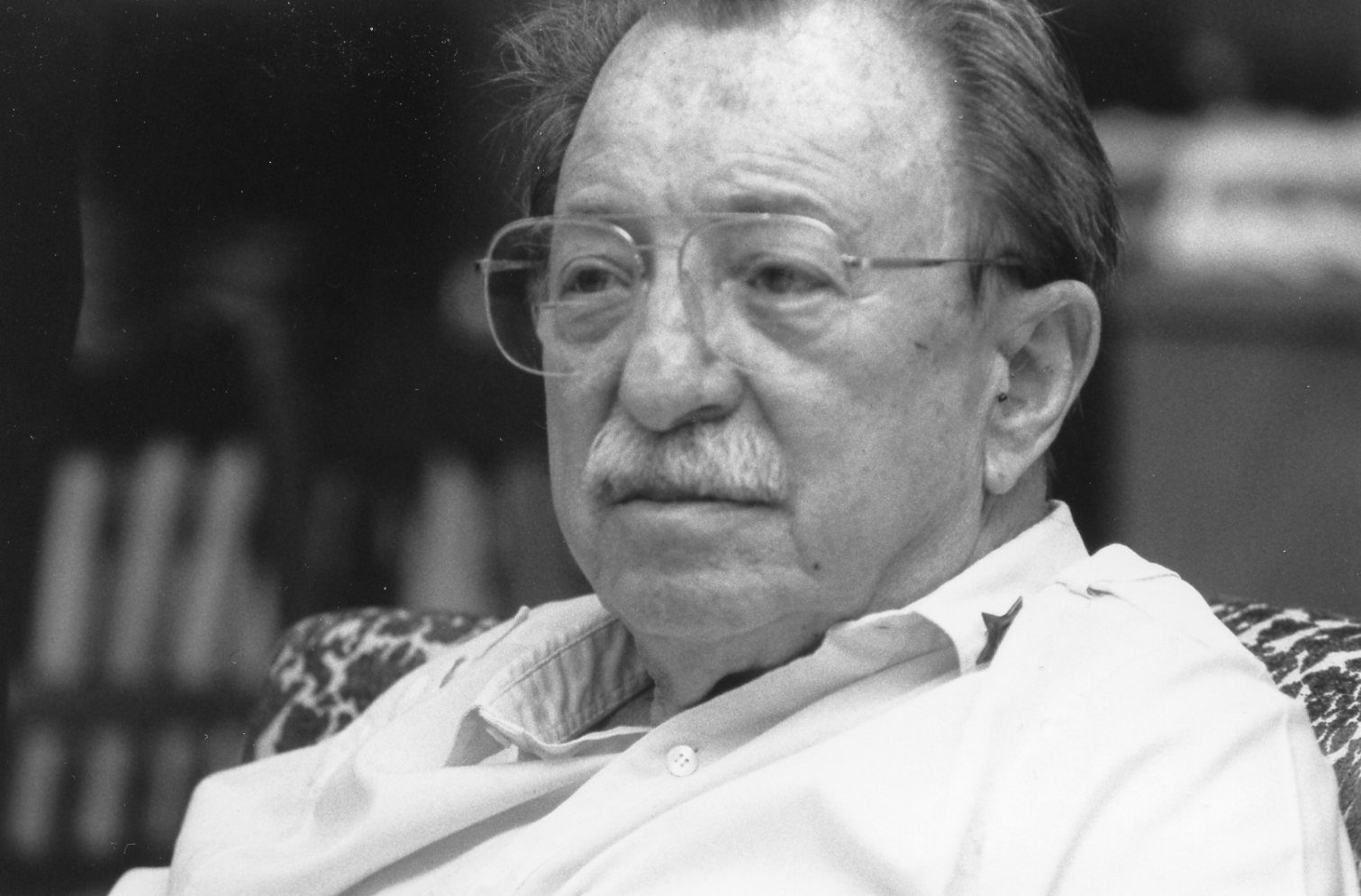Veteran Families: Understanding and Talking With Kids About PTSD

Posted in: Hot Topics, Parenting Concerns
Topics: Mental Illness + Psychiatric Disorders, Stress
The life of a military family is not easy, especially for parents. While nonmilitary parents typically define the roles and responsibilities of taking care of kids, it’s very different in military families when, from time to time, one has to parent as a solo pilot. To complicate matters, when a service member parent returns, the family has to figure out how they fit back into a family structure that was working while they were absent. And it is often the case that preparations need to be considered for when there is another deployment. These transitions are stressful for both parents and kids.
Then, after discharge from military service, veterans and their family members encounter yet another stressful transition as they begin life anew as civilians. Life was disrupted with one parent absent. Now veterans need to find new jobs, and often families have to move again, requiring them to adjust to new communities and new schools, make new friends, and leave old ones behind.
If these stresses were not enough for parents and kids, veteran families often endure an additional stress – a common feeling that the civilian community does not understand or appreciate their sacrifice. While it may seem trivial, it’s super important for these families to be accepted, understood, and included. This disconnect between veterans and civilians continues to widen, with veterans twice as likely to have a child serving in the military while increasingly fewer civilians have a family connection to someone who has served. This divide means their civilian peers are increasingly unaware of the challenges faced by veteran families, and healthcare providers in the community are less likely to understand military culture.
How, then, can military families obtain the support they sorely need from their communities? The feeling that civilians do not truly appreciate the military sacrifice made by these families has only increased, as President Trump has routinely insulted military service members as “Losers and Suckers,” or mocked their service with comments like, in reference to the late Senator McCain, “I like people who weren’t captured.”
The Significance of PTSD Among Veterans and Their Families
While the challenges described above are difficult enough for families to weather, the invisible wounds of war continue to haunt many veterans and their family members in the form of Post-Traumatic Stress Disorder (PTSD). It is estimated that nearly one in seven (13.8%) post-9/11 veterans are impacted by PTSD – a rate nearly double that of civilians. PTSD is a mental health disorder that is often silent or not expressed, and often shameful for the individual and socially stigmatized. Yet it has a serious, intrusive, painful influence on all those who have experienced trauma.
Let’s look at PTSD and, in particular, how it affects the lives and families of our veterans.
PTSD results from having experienced a real and imminent danger to oneself or others. This experience is embedded in memories, thoughts, emotions, and behavior. Imagine the impact of a traumatic event, such as a motor vehicle accident in which a passenger in your car suffers serious injury or tragically dies. The thoughts and feelings related to such an event would have a life-long influence. Then, imagine a single event like this raised to a daily, intense occurrence when on duty in a war zone.
The first symptom of PTSD is “intrusions.” These are traumatic memories, like flashbacks or nightmares, that barge into one’s thinking and cause significant distress. This is often made worse for a veteran after the “always on the go” push of military service slows down to the pace of typical civilian life. While on duty, a service member does not have the time or mental space to dwell on the dangers they face the way they do after returning to slower, civilian life.
The second symptom of PTSD is avoidance. It is a normal and natural defense to try to avoid reminders or feelings of danger that are still intolerable. But avoiding feelings of danger or distress can lead to isolation, and some veterans even describe withdrawing from their family within their own home.
The third symptom of PTSD takes the form of alertness difficulties, particularly “hypervigilance.” When a veteran gets used to being on alert, day by day, minute by minute, because survival depends on it, it’s very difficult to change this frame of mind. It lingers even after returning to civilian life. The need to stay on alert at all times is not physically sustainable – even in the military, you at least have other service members to watch your back – and it leads to a breakdown of the body through problems with sleep, concentration, and irritability. In some cases, veterans may begin to recruit family members to help with the vigilance, such as having their children “post up” at the entrance to each aisle in the grocery store to help look out for danger.
The last symptom of PTSD includes emotional difficulties such as numbness or depression that can make it hard for veterans to express themselves. This can lead to family members feeling “walled out” of the veteran’s experiences. And outside the family, this can be further reinforced by a common refrain that “civilians can’t understand my experience.”
These symptoms can all be very puzzling for children and teens, particularly without understanding PTSD and how it is expressed in a parent. If you are interested to learn more about the symptoms of PTSD, we at Home Base have put together a brief video describing these symptoms in more detail. You can also read this post about Dr. Gene Beresin’s childhood reflections of his father’s struggles with PTSD symptoms.
Family Support and Talking With Kids About PTSD
What can families do to support each other in the face of these enormous challenges?
1. Reach out for help. The first step is to seek professional help. The VA program “Coaching into Care” is a great, national telephone service for families to receive information from professionals who understand military culture and the impact of PTSD on the whole family. They can also provide assistance in connecting veterans with mental health treatment. This is especially important, as family members are often the number one reason veterans are able to overcome the stigma of mental illness and begin to seek treatment.
Additionally, many family members are aware of the Veterans Crisis Line as a critical resource for veterans who may be experiencing extreme distress or thoughts of suicide. Suicide takes the lives of roughly 17 veterans per day. But the Veterans Crisis Line can be utilized by family members, too. If a family member is worried about their veteran and looking for support, they should keep this information handy. In fact, while we know that PTSD may increase risk for suicide, we also know that veterans receiving care for their mental health needs are far less likely to die by suicide than their peers who do not.
2. Try to have family conversations about PTSD. Regardless of whether a veteran has accessed care, the topic of PTSD can be uncomfortable to discuss. Denial, shame, and beliefs reinforced during military service that “emotions are weakness” are hard to overcome, which leaves the impact of PTSD on the family unaddressed. And why talk about this anyway, you may ask? After all, won’t that simply cause the family more distress? Not at all. In fact, leaving these things unspoken can be the most damaging choice of all. Children and teens are perceptive and often look for answers regardless of whether their parents provide them. This means that Google or friends at school will be telling them what to think, robbing veterans of their story and potentially repeating false rumors or information (we call this “scuttlebutt” in the military).
Even young children can benefit from some explanation of what Mom or Dad is going through, as long as it’s appropriate for their age level. Talking about PTSD helps children understand that it’s not their fault, that it’s okay to talk about your challenges, and that asking for help is not something to feel ashamed of. Below are a few considerations about this intimidating but important topic of conversation:
Take it one step at a time. Don’t put the burden on yourself to discuss everything in one big, heavy conversation. Share with your child a little bit at a time, making sure to modify what you say based on what’s developmentally appropriate. You do not need to share details of your traumatic experience to be effective. Simply letting your child know that you had a scary or bad experience while you were overseas, and how this is affecting you, can be enough. As kids get older and more mature, you can begin to share more information as you feel comfortable.
Use resources. Books like “Why Is Dad So Mad/Why Is Mom So Mad?” (there are books for each parent) and Sesame Street for Military Families are great resources to help you approach the conversation.
Model behavior. Remember, children are paying attention to what’s going on in the home. Explaining the challenges you or a veteran parent is going through because of PTSD helps to model open communication (e.g. “Sometimes I stay home when you go out with Mom/Dad,” or “Sometimes I get angry and it’s not your fault.”). Talking about how you are working on these challenges also helps to model the importance of seeking professional help. Kids internalize these lessons and can learn that it’s important and okay to communicate with their parents when they are struggling.
3. Let them know it’s not their fault. In the absence of a conversation, children may sometimes blame themselves when a parent is sad, angry, or arguing in the household. Talking about PTSD is an important opportunity to explain to children it’s not their fault. This can also be an opportunity to make sure your child or teen doesn’t take on a caretaking role. Remind them that there are professionals and doctors helping you to work through this, and that you are there to take care of them.
4. Prepare for their reactions. Sometimes children may become sad, or tearful, or may not react at all. It’s important to validate any emotional response from your child and give them an opportunity to share their feelings. Children may need a break or wish to end the conversation. That’s okay! Give them some breathing room and check back in later about how they’re feeling.
5. You don’t have to have all the answers. Your child may have some specific questions that you can’t answer, or perhaps are not comfortable answering. You can let them know that you are so glad they asked, but don’t have the answer right now, or that it’s difficult to talk about and you can’t answer a particular question. What’s important is that the dialogue is open, and children and teens feel comfortable and supported in talking with you about this difficult subject.
While these conversations are important for kids, just as crucial is the balance of warmth and support that nurtures a strong bond between parent and child. Parents may need to make time for themselves here and there to feel better equipped in managing the high energy that parenthood demands. This is a marathon, not a sprint, and every day is a new opportunity to seek help, make changes, and build stronger relationships with our children.
Lastly, please remember that you are not alone. If you or your loved one served their country and is struggling with symptoms of PTSD, Home Base offers a 2-week treatment program available to veterans, free of charge. Learn more at www.HomeBase.org.


 Share
Share Tweet
Tweet





